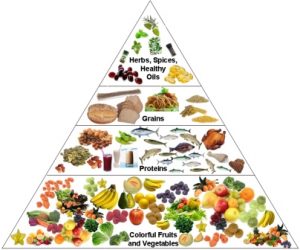Frequently Asked Questions About the Study:
Organic Production Enhances Milk Nutritional Quality by Shifting Fatty Acid Composition: A United States–Wide, 18-Month Study, Published in PLOS ONE, December 9, 2013.
Authors: Charles M. Benbrook, Gillian Butler, Maged A. Latif, Carlo Leifert, Donald R. Davis
See also:
Introduction
On December 9, 2013, Dr. Benbrook and his team published an 18-month, nationwide study that confirmed that there are large and consistent differences in the fatty acid profile of organic and conventional milk and dairy products in the U.S. The research was carried out by a team led by scientists at Washington State University and appeared in the prestigious peer-reviewed journal PLOS ONE.
This page will review and answer frequently asked questions about this important study. Follow these links for the full report, summary, and press release. For background information about the importance of fatty acids, see this primer and this Hygeia Analytics page.
Major Findings
Q:  What are the main findings in the PLOS ONE paper published by the team based at Washington State University?
What are the main findings in the PLOS ONE paper published by the team based at Washington State University?
A: In typical American diets, people consume around 15 grams of omega-6 (ω-6) fatty acids for each gram of omega-3 (ω-3) fatty acids, resulting in an ω-6/ω-3 ratio of 15 — a level far above the heart-healthy goal of around 2:1, or lower.
Both organic and conventional milk and dairy products help lower this key ratio. The average ω-6/ω-3 ratio found in this study for the Organic Valley brand of organic milk is 2.3, while in conventional milk the average ratio is 5.7, still substantially better than most sources of fat in the American diets.
The ω-6/ω-3 ratio in organic milk is much lower than in conventional milk, because pasture and forage-based feeds make up a much greater share of daily “Dry Matter Intake” on organic dairy farms, compared to conventional dairy farms.
The team also reports that simple steps by consumers can markedly lower an individual’s overall dietary ω-6/ω-3 intake ratio. They estimated fatty acid intakes in several hypothetical diet scenarios of a moderately active 30-year old woman, who had an ω-6/ω-3 ratio of 11.3 in the baseline scenario.
Just switching from a moderate consumption of conventional dairy products (equivalent to three servings of fluid milk per day) to a higher level of organic dairy consumption (4.5 servings per day) lowered this individual’s ω-6/ω-3 ratio from 11.3 to 7.8. This 3.5-point decline in the ω-6/ω-3 ratio represents about 40% of the total reduction needed to reach the heart-healthy goal of 2.3.
By also avoiding some fried foods and condiments with very high levels of ω-6 fatty acids, a person can lower their overall ω-6/ω-3 ratio to around 4, achieving about 80% of the reduction necessary to reach the 2.3 heart-healthy ω-6/ω-3 goal.
Q: How much difference was there between organic and conventional milk?
A; The organic whole milk had 62% more total ω-3 fatty acids than conventionally produced milk. Among individual ω-3 fatty acids, organic milk concentrations were 60% higher for ALA (alpha-linolenic acid), 33% higher for EPA (eicosapentaenoic acid), and 18% higher for DPA (docosahexaenoic acid).
Organic whole milk had, on average year round, 18% higher levels of CLA (conjugated linoleic acid) than conventional milk.
Organic whole milk had 25% lower total ω-6 fatty acids, and 25% lower concentration of LA, the major ω-6 fatty acid.
Q: What about the important ratio of omega-6/omega-3 fatty acids?
A: On average over a full year of testing, the organic whole milk had a desirable ω-6/ω-3 ratio of 2.28 in contrast to 5.77 for conventional whole milk. The ratio in conventional milk was 2.5-fold higher than in the organic milk.
Also, organic whole milk is far superior to fish in improving ω-6/ω-3 fatty acid intake ratios, because fish meat contains relatively low levels of both the major ω-6 (LA) and the major ω-3 (ALA). In addition, organic milk is a surprisingly good source of EPA and DPA, two of the three important, long-chain ω-3 fatty acids, EPA, DPA, and DHA.
Implications for Consumers
Q: What does this study suggest for healthy diets?
A: Organic whole milk and dairy products have by far the lowest ω-6/ω-3 fatty acid ratio of all leading fat sources in the U.S. food supply, and thus offer consumers convenient, accessible options to improve the overall ω-6/ω-3 ratio in their daily diets.
Americans consume far too much food high in ω-6 fatty acids (e.g., vegetable oils and fried foods) and too little food high in ω-3 fatty acids (e.g., oily fish, beans, fruits and vegetables). Although both ω-6 and ω-3 fatty acids are essential, poor dietary choices have skewed the ratio of ω-6/ω-3 fatty acids upward to, even above, 15.
High ω-6/ω-3 ratios have been implicated in a wide range of health problems, including cardiovascular disease, obesity, cancer, diabetes, neurological and immune system disorders, and visual impairment. Reduced dietary ω-6/ω-3 ratios, along with increased consumption of ω-3 fatty acids, are likely most important for women hoping to bear a child, pregnant women, infants, and children through adolescence.
Based on model U.S. diets, the team estimated how much mostly full-fat milk products can improve dietary ω-6/ω-3 ratios, compared to the heart-healthy goal of 2.3. About 15% of needed progress toward a ratio of 2.3 can be achieved by switching from conventional to organic dairy products (3 fluid-milk-equivalent servings per day), or by increasing conventional dairy product consumption to 4.5 servings per day.
The combination of two changes—increasing consumption to 4.5 servings per day and choosing full-fat organic dairy products—achieves about 40% of the needed progress toward a ratio of 2.3.
Substantial further progress can come from minor substitutions in food choices to reduce consumption of common vegetable oils that contain high levels of ω-6 fatty acids (e.g., by switching to canola oil and canola oil margarine). When combined, the three interventions achieve 80% of the reduction needed to reach the 2.3 heart-health goal.
Q: What does this study add to existing knowledge regarding the role of dairy products in a healthy diet?
A: This 18-month, nationwide study confirms that there are large and consistent differences in the fatty acid profile of organic and conventional milk and dairy products in the U.S.
Furthermore, it shows that increasing the consumption of dairy products, coupled with selecting organic products, will significantly lower an individual’s overall dietary ω-6/ω-3 ratio.
By also avoiding certain foods very high in ω-6 fatty acids, and/or avoiding certain cooking methods (e.g., deep-fat frying), a person can achieve most, or even all of the reduction needed in their overall dietary ω-6/ω-3 ratio to optimally promote heart health and prevent the onset of cardiovascular disease.
And last, contrary to many sources of information on the importance of fish consumption in improving the fatty acid profile of American diets, consuming dairy products has a far greater, and more positive impact on overall dietary ω-6/ω-3 ratios than fish, because commonly consumed fish species contain relatively low levels of LA and ALA, the major ω-6 and ω-3 fatty acids.
Q: Can I get the omega-3 fatty acids I need by eating fish? What about fish oil tablets?
A: The Dietary Guidelines for Americans recommend consumption of about 8 ounces per week of a variety of fish (about twice the current, average U.S. consumption), with up to 12 ounces per week for women who are pregnant or breastfeeding.
Although fish can and should play a role in a healthy diet, particularly for DHA, consuming large amounts should be avoided, because fish may be contaminated with heavy metals such as mercury, as well as other toxins, including PCBs and dioxins. Fish and fish oil tablets can be important sources of EPA and DHA, but fish and fish oil contain far too little ALA to significantly improve the ω-6/ω-3 ratio in U.S. diets.
The study’s analysis of model diets found that the ω-6/ω-3 ratio could be improved most dramatically by decreasing LA intakes, coupled with consuming full-fat dairy products, especially if they are organic. Without question though, fish excels as a source of the important long-chain, ω-3 fatty acid DHA.
Q: Can drinking whole milk help fight obesity?
A: Emerging science suggests the answer is “Yes.”
For example, a study published in the March 2013 issue of Archives of Disease in Childhood found that children who drank skim or 1% milk were more likely to be overweight than those who drank whole or 2% milk. Another study was published in the American Journal of Clinical Nutrition in 2006. It followed 20,000 women over a 9-year period and found a positive link between dairy fat consumption and diminished weight gain.
These and other studies are causing nutrition experts to rethink the role of whole milk in a healthy diet. In the July 2013 issue of JAMA Pediatrics, Dr. David Ludwig and Dr. Walter Willett wrote that it is time to discard the notion that low-fat milk is better. Dr. Ludwig is director of the New Balance Foundation Obesity Prevention Center at Boston Children’s Hospital, and Dr. Willett chairs the department of nutrition and epidemiology at the Harvard School of Public Health,
These eminent health experts cite a lack of evidence that low-fat milk helps in weight management. They suggest that skim and low-fat milk have lower palatability and satiety value (ability to satisfy hunger and give a sense of fullness), and people often compensate by drinking or eating more. With children, this compensation may come in the form of sweetened milk (e.g., chocolate milk), a choice that undermines diet quality by adding sugar, which is already consumed in excess.
Impacts on Milk Production

Q: How do dairy cow diets impact the nutritional quality of milk?
A: Like typical American diets, dairy cow diets have changed over the years. Instead of pasture and grass-based forages, the vast majority of cows on conventional dairy farms in the U.S. receive year-round rations high in the building blocks of ω-6 fatty acids, like corn grain and corn silage, with very little or no access to pasture. Not surprisingly, what a cow eats affects the quality of her milk.
Grass and legume forages build ω-3 fatty acids in milk, while corn and other grain-based feeds boost the levels of ω-6 fatty acids.
The USDA National Organic Program (NOP) requires organic dairy farmers to provide lactating cows with 100% organic feed and access to pasture for a minimum of 120 days per year, or more days where the regional climate and soils support the growth of pastures for more than 120 days.
NOP rules further require that at least 30% of a lactating cow’s daily “Dry Matter Intake” come from pasture during the growing season. Beyond reliance on pasture, the daily mix of feeds on organic dairy farms often includes stored forage-based feeds in the form of dry hay, silage, or baleage. Most dairy cow rations on organic farms also include some corn, either as grain or silage, but not nearly as much as on conventional dairy farms. Soybean meal and other soy and protein supplements are also common components in many dairy cow rations.
Pasture and forage-based feeds for dairy cows also lead to other benefits. Scientists from the University of Wisconsin have demonstrated that the best source of CLA is dairy and meat products from pastured cows, because they produce up to five-times more CLA than cows fed typical grain-based rations. Despite efforts to find ways to artificially raise CLA levels, the only method found to consistently and significantly raise CLA levels in milk was grazing cows on fresh grass. Cows on pasture and forage-based feeds also tend to be healthier and productive through more lactation cycles than cows on farms relying heavily on corn-based feeds.
Q: Don’t some conventional dairy farmers provide their cows access to pasture?
A: The share of daily Dry Matter Intake from pasture and fresh forages on conventional dairy farms has decreased continuously over the last 40 years and is now, on average, very small (at most, a few percent, and often essentially none).
However, some mostly small-scale, conventional U.S. dairy farmers feed cows a forage-based diet comparable to the diet typically fed (and indeed required) on organic dairy farms. Nearly all dairy farms— organic and conventional — feed mostly pasture and forage-based feeds in some coastal areas where grasses grow 250 days or more per year.
Although this study did not seek out milk samples from the small universe of conventional, pasture-based farms, the team found limited evidence that milk from such farms has health-promoting fatty acid profiles similar to those reported in this study for organic milk.
Q: How does dairy cow feed, and milk quality, vary over different seasons?
A: Based on 18 months of milk samples, the study team found that concentrations of ALA and LA (the main drivers of the ω-6/ω-3 ratio) were relatively consistent over time for both organic and conventional milk. The only significant effect of season was a substantial increase in the amount of CLA in organic milk from May through October, which corresponds to the pasture season. Averaged over a full year, CLA was 18% higher in organic milk compared to conventional milk.
About the Study
Q: How was the study conducted?
A: Milk Testing: 384 samples of organic and conventional fresh, pasteurized whole milk were tested over 18 months (Jan. 2011−June 2012) by Silliker, Inc. an accredited commercial laboratory in Illinois. Average levels of fatty acids were derived from a full calendar year of milk samples; the additional 6 months of data were used to evaluate seasonal differences.
The samples came from 14 commercial milk processors in 7 of 10 U.S. dairy regions, making this the largest and most comprehensive U.S. study of milk-fat composition in organic and conventionally produced milk.
Diet Calculations: Hypothetical typical diets were constructed for a moderately active adult woman based on commonly consumed foods described in USDA’s National Nutrient Database.
To assess the impact of lowering ω-6 intakes from vegetable oils, the study evaluated 3 simple diet substitutions: pita chips for tortilla chips, canola oil for soy oil, and canola-oil margarine for regular margarine.
To assess the impact of increasing full-fat dairy in the diet, the study compared “moderate” versus “high” levels of dairy intake. “Moderate” consumption was based on dairy products equivalent to three servings of fluid milk, the daily amount recommended in the Dietary Guidelines for Americans—1.5 cups of whole milk, 6 oz. of low-fat yogurt with fruit, 1.5 oz. of cheese, plus one-half cup of vanilla ice cream (separately classified as a dairy dessert under the Dietary Guidelines).
The “high” level of consumption assumed the equivalent of 4.5 servings of fluid milk, a 50% increase over the “moderate” intake. These scenarios included an additional one-half serving of milk (0.5 cup) and one additional serving of cheese (1.5 oz.). Because of limited USDA data for the long-chain polyunsaturated fatty acids EPA and DPA, the study team calculated LA/ALA ratios for each of the diet scenarios, a good approximation for total ω-6/ω-3 ratios.
Q: What is CROPP/OV’s connection to this study?
A: The organic milk analyzed in this study came solely from cows managed by farmer-owners of the cooperative known as CROPP, which stands for the Cooperative Regions of Organic Producer Pools. CROPP cooperative markets its milk products through the Organic Valley (OV) brand.
The conventional milk samples were collected on the same day as the organic samples, at each milk processing plant that receives CROPP/OV organic milk. Hence, the study results reflect milk quality differences on conventional and organic dairy farms in the same regions at the same time of year.
Through past collaborative work with CROPP/OV, Dr. Charles Benbrook from the Center for Sustaining Agriculture and Natural Resources (CSANR) at Washington State University learned about the extensive milk quality data CROPP/OV had compiled on the fatty acid profiles of organic and conventional milk. Benbrook requested access to the CROPP/OV data in order to conduct statistical tests focused on whether there were nutritionally relevant differences in milk quality –
- Between the organic and conventional milk samples,
- Over time (e.g., spring versus winter), and/or
- Across regions of the country.
CROPP/OV agreed to share the raw dataset, and Benbrook invited WSU colleague Dr. Donald R. Davis, two faculty experts at Newcastle University (Carlo Leiffert and Gillian Butler), and Maged Latif, the CROPP/OV Director of Research and Quality Assurance, to join the study team.
Q: What is PLOS ONE, the journal that published the study?
A: Public Library of Science (PLOS) ONE is the largest scholarly journal in the world, and is generally regarded globally as the number-three general science journal in terms of impact. The journal covers all scientific disciplines, is international in scope, and all papers are available free-of-charge online (i.e., PLOS ONE is an open-access journal).
Like all high-quality scholarly journals, the editors of PLOS ONE rely on rigorous internal and external scientific peer review to determine whether articles merit publication. Prior to acceptance, the team’s paper was revised twice in response to PLOS ONE reviewer comments.
For more information, see: www.plosone.org.
Q: Who paid for the study and how much did it cost?
A: CROPP/OV paid for the testing of milk quality over 18 months, which was done by Silliker, Inc., a well-respected, accredited contract laboratory. The total cost of the study’s laboratory work was approximately $45,000.
The statistical analysis, preparation of the paper, and the review and revision process cost approximately $90,000 and was paid for by the Measure to Manage (M2M) program in the Center for Sustaining Agriculture and Natural Resources at Washington State University. CROPP/OV is among several companies providing general research support to the M2M program, and provided $37,500 in core funding in 2012 and $25,000 in 2013.
